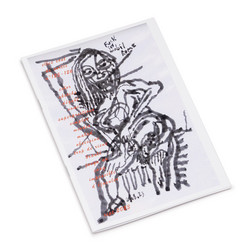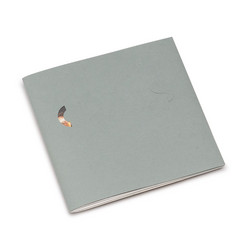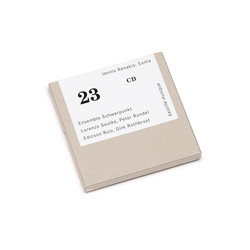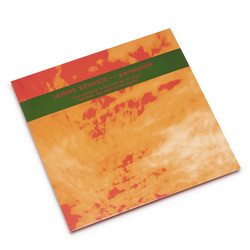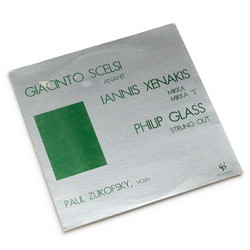2025 Stock. Harcover, 388 pages. Soundohm is proud to offer this essential English edition accompanying the first major comprehensive presentation of the work of Iannis Xenakis in two groundbreaking exhibitions: Iannis Xenakis: Sonic Odysseys and Iannis Xenakis and Greece, organized and presented at the National Museum of Contemporary Art Athens (ΕΜΣΤ) in 2023.
Iannis Xenakis (1922–2001) was an avant-garde composer, music theorist, architect, engineer, mathematician, and one of the most progressive creative thinkers and cultural practitioners of the second half of the 20th century. In the 1950s, Xenakis broke the boundaries of contemporary music and devised a genre entirely unique: instantly recognizable despite being in a state of constant reinvention and revolution. His radical music is, in essence, a reference to antiquity, an ode to nature and the elements, a tribute to modernism at its most extreme, and visionary in its use of technology.
As Katerina Gregos, ΕΜΣΤ artistic director and curator, notes: "Xenakis' oeuvre still feels utterly novel, as if it literally has arrived from the future, sounding, still, urgent, fresh and contemporary."
Xenakis's modernism was not gridded and reductive but synthetic and synaesthetic. His work is a weather system, made up of natural forms broken down into a fluid spectrum. His music and architecture were vectoral, made in the shape of clouds, clusters, branching curves, grains of sound: like lightning and thunder, waves and swarms. He pioneered granular synthesis, a technique for generating new sounds based on 'grains' of recorded sound, and made music from the shape of tree branches, developing a concept he called 'Arborescences', notably in his piece for solo piano Evryali (1973).
This richly illustrated publication is co-produced by ΕΜΣΤ and the Philharmonie de Paris, and offers an unprecedented insight into Xenakis' multifaceted, multidisciplinary practice. The book is organized around six chapters, focusing on some of Xenakis' most seminal works, both musical and architectural. Based on the Xenakis Family archives, it features informative texts and colour reproductions of the works exhibited, including 20 musical and architectural opuses, 220 original and archival documents (photos, models, graphic scores, personal items) as well as audio-visual materials.
Xenakis pioneered the use of mathematical models in music, applied game theory to composition, and was (and still remains) a seminal influence on the development of electronic and industrial music. He was one of the innovators of multi-media art, conjoining music with architecture and designing spaces for specific compositions. His Polytope works (1967–84), multilocational durational events combining light, sound, and space, were literal bombardments of light, like an acid disco beamed back from the future. Notable among these are the Polytope of Cluny (1971), a choreography of laser beams mounted on custom-designed tracks across the ceiling of Roman baths, and the Polytope de Mycènes (1978), staged in and around the ancient Greek ruins. He was also one of the first to deploy computers for musical composition, inventing the UPIC, a computerized musical composition tool that could translate graphical images into sound.
In 1947, during the Greek Civil War, Xenakis fled to Paris as a wanted man for his resistance activities, only to return 27 years later after the fall of the military dictatorship in 1974. The publication includes personal letters with both political and emotive gravitas, such as Xenakis's hand-drafted letter asking to be accepted back into Greece after his long self-imposed exile. Until his death in 2001, he composed over 150 works, from vocal, choral and orchestral, to chamber and solo music, including seminal early compositions like Metastaseis (1953–54) and Pithoprakta (1955).
He also left behind a small but seminal architectural oeuvre, produced while working with Le Corbusier at his Paris studio in the 1950s. Most emblematic of these is the Philips Pavilion for the Brussels World's Fair Expo 1958, with music by Edgar Varèse (his Poème Electronique), while at the entrance to the Pavilion Xenakis' own composition Concret PH could be heard. The publication includes the original model of this iconic architectural structure, as well as a model of the Diatope (Polytope de Beaubourg), another multimedia pavilion created and presented at Paris's Centre Pompidou in 1978.
The book presents both personal and artistic material, revealing Xenakis's deep love of Greek antiquity through his idiomatic use of Ancient Greek and mythology in his titles and concept-naming. It offers an endearing insight into how intuitive and unsystemic Xenakis's work really was, something often overshadowed by the mathematics he employed to compose music and synthesize sound. Objects from the composer's home (a Triton's trumpet shell, African masks, a tambour, books and records on Xenakis's contemporaries, a flint nodule, a Cycladic figurine) provide an intimate window into the ecumenical interests of this restless spirit.

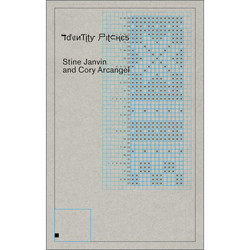

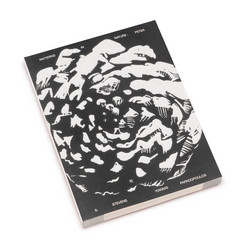

![Noisemakers[s]](https://cdn.soundohm.com/data/products/2024-03/NoisemakerS_Book_01-jpg.jpg.250.jpg)



